Complete Guide to Yosemite Waterfalls
Hi friends and happy Monday! Spring in Yosemite National Park is one of the best times to visit – the water flow is at its highest during the Spring months, causing the Merced River to swell and the waterfalls to roar. So this week I’m incredibly excited to partner with Visit Yosemite | Madera County as we take a look at all the major waterfalls in the park, including the seasonal falls that show up this time of year, as well as the year-round waterfalls that rage in Spring. There are so many great Yosemite waterfalls, and they all deserve a visit...so below we’ve listed out 20 of them with details on how you can enjoy them on your next visit.
Yosemite Falls and meadow flooding in May 2023
Lower Yosemite Falls from May 2023
Yosemite Falls viewed from Pohono Loop Trail in early Summer 2021
1. Yosemite Falls
Named Chorlok by the indigenous Ahwahneechee people, which means “high fall”, Yosemite Falls is certainly the most famous waterfall in this national park. This iconic waterfall is also one of the world’s tallest and is actually made of three separate falls. The Upper Yosemite Fall, the middle cascades, and Lower Yosemite Fall total a staggering drop of 2,425 feet, making it the tallest waterfall in North America. The trail to the top of Yosemite Falls is one of the most strenuous Yosemite day hikes at over 7 miles and 2,700 feet in elevation gain, but you can see Yosemite Falls from numerous spots inside Yosemite Valley, especially around Yosemite Village and Yosemite Valley Lodge. The easy one-mile loop trail leads to the base of Lower Yosemite Fall, and expect to get a bit wet here in Spring (the eastern side of the loop is wheelchair accessible). For more details on this spot, see my full Lower Yosemite Falls blog post and YouTube video here.
Ribbon Fall in the Yosemite Valley from May 2023
Ribbon Fall next to El Capitan in May 2023
2. Ribbon Fall
Flowing off the cliffside immediately to the west of El Capitan, Ribbon Fall is fed by melting Winter snow. It often goes unnoticed by park visitors as it runs completely dry much of the year. However, when temperatures start to rise in late Spring, melting away the Winter snowpack, waterfalls in the park are at their peak, and Ribbon Fall is certainly no exception. This waterfall crashes down a whopping 1,612 feet, giving Ribbon Fall the distinction of being the longest single-drop waterfall in North America. One of the best viewing angles of this beauty is at the marker where John Muir and President Teddy Roosevelt sat by a campfire.
Horsetail Fall and Merced River flooding the valley in May 2023
Horsetail Fall Firefall in Yosemite from February 2023
Horsetail Fall Firefall in Yosemite from February 2021
3. Horestail Fall & Firefall
When it comes to Yosemite waterfalls, typically the Spring season is the ideal time to visit...the snowmelt causes the seasonal waterfalls to emerge and the year-round falls to rage. Although Horsetail Fall is beautiful during this time of year, the main draw for this particular waterfall happens for a couple weeks every February, as photographers and nature lovers flock to the valley for the annual Firefall event. This phenomenon happens when the sunset light reflects off Horsetail Fall at a specific angle, creating vibrant orange and red hues that make it appear like the granite is on fire. For more information on Horsetail Fall and the Firefall event, make sure to check out my Complete Firefall Visitors Guide and virtual visit YouTube video here.
Bridalveil Fall in Yosemite Valley from May 2023
Bridalveil Fall seen from Tunnel View in May 2023
Bridalveil Fall and the Merced River seen from Big Oak Flat Road
Viewing platform at the base of Bridalveil Fall in December 2023
4. Bridalveil Fall
Often mistaken for Yosemite Falls by first time visitors, Bridalveil Fall is typically the first major waterfall you see when visiting Yosemite National Park. Although it flows incredibly full in the late Spring, water is seen falling here year-round, even if it’s just a trickle. There are so many wonderful spots to view this iconic feature drop over 600 feet, including Tunnel View and Valley View. From these famous viewpoints, you can see this waterfall paired up with other Yosemite landmarks like El Capitan and Half Dome. The NPS has recently renovated the parking area and short 1/4-mile trail leading to a lovely viewing platform at the base of this fall, which I highly recommend checking out. One of my favorite spots to enjoy this waterfall, though, is a lesser known overlook along Big Oak Flat Road. Here you can see Bridalveil framed by the massive granite cliffs with the Merced meandering through the valley below.
Silver Strand Falls seen from Tunnel View in May 2023
5. Silver Strand Falls
This seasonal waterfall drops 574 feet above Tunnel View, arguable the most popular viewpoint in all of Yosemite National Park...however, most visitors are completely unaware Silver Strand Falls exists. This isn’t a complete surprise, though, considering the iconic and picturesque views provided here of Half Dome being framed by El Capitan, the Cathedral Rocks, and Bridalveil Fall. Next time you make the customary stop at Tunnel View, make sure to look up and to the right, and give this waterfall some love.
Vernal Fall seen from the Mist Trail in Spring 2021
Brink of Vernal Fall along the Mist Trail in Yosemite National Park
Vernal Fall Footbridge in November 2022
6. Vernal Fall
Located along the popular Mist Trail, the Merced River crashes down over 300 feet in stunning form, often creating beautiful rainbows at the bottom of the mist-filled basin. There are over 600 steep granite stairs leading to the top of this waterfall, but the views from the brink of Vernal Fall is well worth the climb. During the wet season in late Spring, the waterfall is at its greatest volume, as it turns into a thundering force to be reckoned with. For more information on hiking all the way to the top of Vernal Fall during Spring, check out my full Mist Trail blog post and virtual visit YouTube video here.
For a shorter and gentler hike, you can take the Mist Trail to the Vernal Fall Footbridge. For more information on this hike during Winter, check out my full Vernal Fall Footbridge blog post and virtual visit YouTube video here.
Silver Apron along Mist Trail in Spring 2021
Large cascade above Silver Apron in Yosemite National Park
7. Silver Apron
A short distance beyond the brink of Vernal Fall, the Merced River violently tumbles down beneath a footbridge and shoots across a long smooth slab of granite into the Emerald Pool. This wonderfully unique section of the river is called the Silver Apron, and it’s the perfect spot to take a rest in the shade before continuing on the Mist Trail to Nevada Fall.
Nevada Fall along Mist Trail from Spring 2021
Brink of Nevada Fall in Yosemite National Park
Looking down from the brink of Nevada Fall with Glacier Point in the distance
8. Nevada Fall
Reaching the brink of Nevada Fall is the culmination of the Mist Trail, which is 7-8 miles round trip with over 2,000 feet in elevation change. Plunging down 594 feet, this waterfall absolutely rages in the Spring. There are multiple spots to “soak” in the view of this fall...you can enjoy it from a granite platform near the base, along the set of switchbacks to the side of the fall, and from the John Muir Trail along the “Ice Cut” section. My favorite spot, though, is from the brink of the waterfall. Looking down the intense plume of water and out across the valley to Glacier Point is beyond breathtaking. For more information on hiking all the way to the top of Nevada Fall during Spring, check out my full Mist Trail blog post and virtual visit YouTube video here.
Illilouette Fall & Panorama Trail seen from Washburn Point in Spring 2024
Illilouette Creek cascades seen from Mist Trail in Spring 2021
9. Illilouette Fall
Tucked away in the canyons below Glacier Point and Washburn point, Illilouette Fall is one of the most secluded waterfalls in and around Yosemite Valley, There are very few spots to see it, unlike the other major waterfalls nearby. You can see partial views along the beginning of the Mist Trail, as well as from Washburn Point. However, the best way to see this waterfall in all its glory is by hiking down the Panorama Trail from Glacier Point. This 4 mile round trip hike with 1400 feet in elevation change is a bit strenuous (especially on the way back), but the views along the way are spectacular. The main waterfall is large and grand in the Springtime, followed by a series of cascades down Illilouette Creek.
Sentinel Falls seen from Yosemite Valley Swinging Bridge in Spring 2024
Looking down at Sentinel Falls from Roosevelt Point along the Pohono Loop Trail
10. Sentinel Falls
A seasonal waterfall which flows approximately from March through June (with peak flow in May), Sentinel Falls is found on the south side of Yosemite Valley just west of Sentinel Rock – hence the name. Multiple cascades crash down ranging in height from 50-500 feet.
This waterfall can best be viewed from the Yosemite Valley Swinging Bridge, as well as areas along Southside Drive near the Sentinel Beach Picnic Area and the Four Mile Trailhead. You can also view it from across the Yosemite Valley while hiking the Upper Yosemite Fall Trail and from Leidig Meadow. My personal favorite viewpoint of this waterfall, though, takes a bit of hiking. Taking the Pohono Loop Trail that connects Sentinel Dome and Taft Point, you can peer down from the cliff-top overlook at Roosevelt Point as this multi-tiered waterfall cascades past you. For details on the Pohono Loop Trail, see my full blog post and YouTube virtual visit video here.
Royal Arch Cascade seen from Valley Loop Trail in December 2022
Royal Arch Cascade above the Ahwahnee Hotel in Yosemite Valley
11. Royal Arch Cascade
Cascading down the granite wall next to the Royal Arches below North Dome, this waterfall is at its fullest during late Spring when the snowpack begins to melt. It can be spotted from multiple locations on the east side of the Yosemite Valley, especially from the Stoneman Meadow area. However, you can view it close-up from the Valley Loop Trail just a short jaunt from the Ahwahnee Hotel.
Staircase Falls near Curry Village in Yosemite Valley
12. Staircase Falls
Dropping 1,300 feet over a series of granite “steps”, Staircase Falls is another Yosemite Valley waterfall that often goes unnoticed. Typically only showing up in late Spring, this ephemeral waterfall can be found near Curry Village below Glacier Point. One of the best spots to see these cascading falls is near the Curry Village Ice Rink.
Wildcat Falls seen from Highway 140 in May 2023
At the base of Wildcat Falls in early Summer 2021
At the base of Wildcat Falls in February 2023
13. Wildcat Falls
An incredible Spring waterfall that often gets overlooked is Wildcat Falls. This waterfall is actually the first waterfall that can be seen as one enters Yosemite National Park from El Portal and the Arch Rock entrance along Highway 140. Wildcat Falls is comprised of seven drops rushing down over 700 feet on the north wall of the Merced Gorge. If you don’t know to look up for it, you’d probably miss it entirely driving by on your way to more popular Yosemite Valley locations. The water can rage here in Spring, but by late Summer this waterfall often slows to a mere trickle. A marked lookout point with information plaques is located a 1/4 mile from Wildcat Falls at the Cascade Falls parking area. For more details on Wildcat Falls, see my full blog post and virtual visit YouTube video here.
Lower section of The Cascades in Yosemite from early Summer 2021
Lower section of The Cascades in Yosemite from May 2023
Upper section of The Cascades seen from Big Oak Flat Road in early Summer 2021
14. The Cascades
The Cascades (also known as Cascade Falls) start off with a series of tumbling waterfalls and cascades through a dense forest in the Western Yosemite High Country. The Cascades then drop nearly 600 feet near and beneath Big Oak Flat Road, and then finish the plummet just above Highway 140. Tamarack Creek merges with Cascade Creek just above the lower falls, which plunge into the Merced Gorge. During the Spring snowmelt, you can enjoy a second segment of falling water at the top of falls as it partially funnels towards the cliff. A marked lookout point with information plaques is located at the Cascade Falls parking area and contains information plaques for you to read as you watch this waterfall. For more details on The Cascades, see my full blog post and virtual visit YouTube video here.
Foresta Falls in Yosemite National Park in early Summer 2021
Forest Falls and old Foresta Road bridge in Yosemite
15. Foresta Falls
One of Yosemite’s lesser visited waterfalls is located less than 5 miles from Yosemite Valley. Foresta Falls descends about 200 feet as a series of cascades covering half a mile. The highlight is the 40 foot plunge followed by another 20 foot cascade below that flows under a decaying (but safe to walk on) bridge. This easy out and back trail leads you along the old dirt Foresta Road, which is lined with wildflowers in the Spring. For details on this waterfall hike, see my full Foresta Falls blog post and virtual visit YouTube video here.
Chilnualna Falls near Wawona in Spring 2021
Long exposure of Chilnualna Falls in Yosemite National Park
Chilnualna Falls in Yosemite National Park in Spring 2021
16. Chilnualna Falls
Located in the Wawona area, Chilnualna Falls are comprised of five large cascades pouring down over granite formations above the Wawona basin. The flow here reaches its peak in Spring and early Summer. The full trail gives you the opportunity to view the Chilnualna Falls cascades in many locations along the hike, but you’ll need to be up for a strenuous 8 mile hike with nearly 2,500 ft in elevation gain. For a shorter hike, you can consider the Lower Chilnualna Falls Trail, which leads to a series of cascades and waterfalls. This trail contains a few sections of steep granite steps, but the hike is relatively easy at just over a 1/2 mile with 250 feet in elevation gain. For details on this hike see my full blog post and virtual visit YouTube video here.
Tueeulala Falls and O'Shaughnessy Dam at Hetch Hetchy in May 2023
Tueeulala Falls in Hetch Hetchy Valley from May 2023
Tueeulala Falls crossing the Wapama Falls Trail in Hetch Hetchy
17. Tueeulala Falls
Located in the Hetch Hetchy Valley of Yosemite National Park, Tueeulala Falls crashes down over 800 feet above the Hetch Hetchy Reservoir. The trail to the more commonly known Wapama Falls crosses directly in front of the spraying water. Considered a seasonal waterfall, you’re most likely to see the water raging here during the Spring months, and you get great views as you approach it along the trail. Crossing at the base of the falls can mean getting pretty wet, as the water runs up to calf height during the snow melt season.
Wapama Falls in Yosemite’s Hetch Hetchy Valley from May 2023
Wapama Falls and footbridge in Hetch Hetchy
18. Wapama Falls
One of the main attractions in the Hetch Hetchy region of Yosemite, Wapama Falls is fed by Falls Creek, and a series of footbridges cross directly in front of the cascading falls. In the Spring, the closer you get to the base of this waterfall, the harder it is to stay dry. One thing that sets this 5-mile round trip hike apart from some of Yosemite’s other famous waterfalls is how close you get to the base of the falls along the trail. During the peak run-off season, the water can crash down onto and over the footbridges that cross in front with incredible force. For more information on Hetch Hetchy and the hike to Wapama Falls, check out my full blog post and virtual visit YouTube video here.
Quaking Aspen Falls along Tioga Road in July 2023
19. Quaking Aspen Falls
Sometimes referred to as Tioga Pass Falls, Quaking Aspen Falls is a seasonal cascading waterfall that spills down a series of large granite boulders right off Tioga Road (Highway 120). Since it’s located in Yosemite’s high country, access to this beauty is limited primarily to the Summer and Fall months, which means it’s often a trickle (or completely dry) by the time visitors venture by. However, after a heavy snow season, Quaking Aspen Falls is an incredible sight to see right from the highway. You can find it right next to the Yosemite Creek Picnic Area on your next Tioga Pass road trip. For more information on things to do along Tioga Road, check out my First-Timers Guide to Tioga Pass.
South Fork Tuolumne Falls along Tioga Road in Yosemite National Park
20. South Fork Tuolumne Falls
Another ephemeral waterfall found in Yosemite’s high country, these cascading falls from the South Fork Tuolumne River tumble down right next to and under a bridge along Tioga Road (Highway 120). There’s a large pullout for vehicles just to the north for visitors who want to get a closer look. Just be very cautious of cars speeding by...although it can be tempting to hang out on the bridge for the views, there is no sidewalk for pedestrians.
Nevada Fall seen from John Muir Trail in Yosemite National Park
Know Before You Go
• Fore more great information on Yosemite’s waterfalls, check out Visit Yosemite | Madera County’s “Guide to Yosemite’s Waterfalls”.
• Remember the Leave No Trace Principles and pack out what you pack in.
• Check the official NPS website prior to visiting for the most up-to-date weather and road conditions.
• Know that many of the waterfalls in Yosemite turn to a trickle, or even completely dry up, by late Summer and Fall. If you want to see waterfalls at their peak flow, plan a visit in late Spring.
• This is black bear country. Bears and other wildlife can be present on trails at any time of the day or night. Feeding and approaching wildlife is dangerous and illegal. Make sure to properly store your food.
• Be prepared for sudden and sometimes hazardous changes in weather and trail conditions, especially during the Spring season...rock falls are common around waterfalls.
• Be cautious when crossing swollen streams and turn back if conditions warrant. Good planning and judgment may protect you from unsafe situations and prevent the need for rescue.
Yosemite Falls in Yosemite National Park in Spring 2023
In Summary & Post Sponsor
Thanks so much for joining me in Yosemite National Park this week. For a virtual visit to these Yosemite waterfalls, make sure to check out my Behind the Blog video at the top of this post, or watch it on YouTube here.
I’d like to give a special thank you to the sponsor of this post, Visit Yosemite | Madera County. Please consider stopping off to support the small businesses and local economies of the gateway communities surrounding the park. For great information on what to do inside Yosemite National Park and in Madera County directly to the south (along Highway 41), check out YosemiteThisYear.com and @yosemitemadera on Instagram. Until next time, I hope you find adventure and encouragement wherever you go.
Vernal Fall and rainbow along the Mist Trail in Yosemite
If you enjoyed this post, you might also like…
About Me
I’m Dawn Marie, a travel and lifestyle blogger based out of Southern California. With in-depth articles, travel guides, and reviews on hotels & products, I seek to share my journeys to help you plan for your own. My adventures take me all over California, the western United States, and around the globe...and every Monday I post new content here, including a comprehensive blog post and YouTube video.
Search the Blog
Featured Posts
Etsy Shop
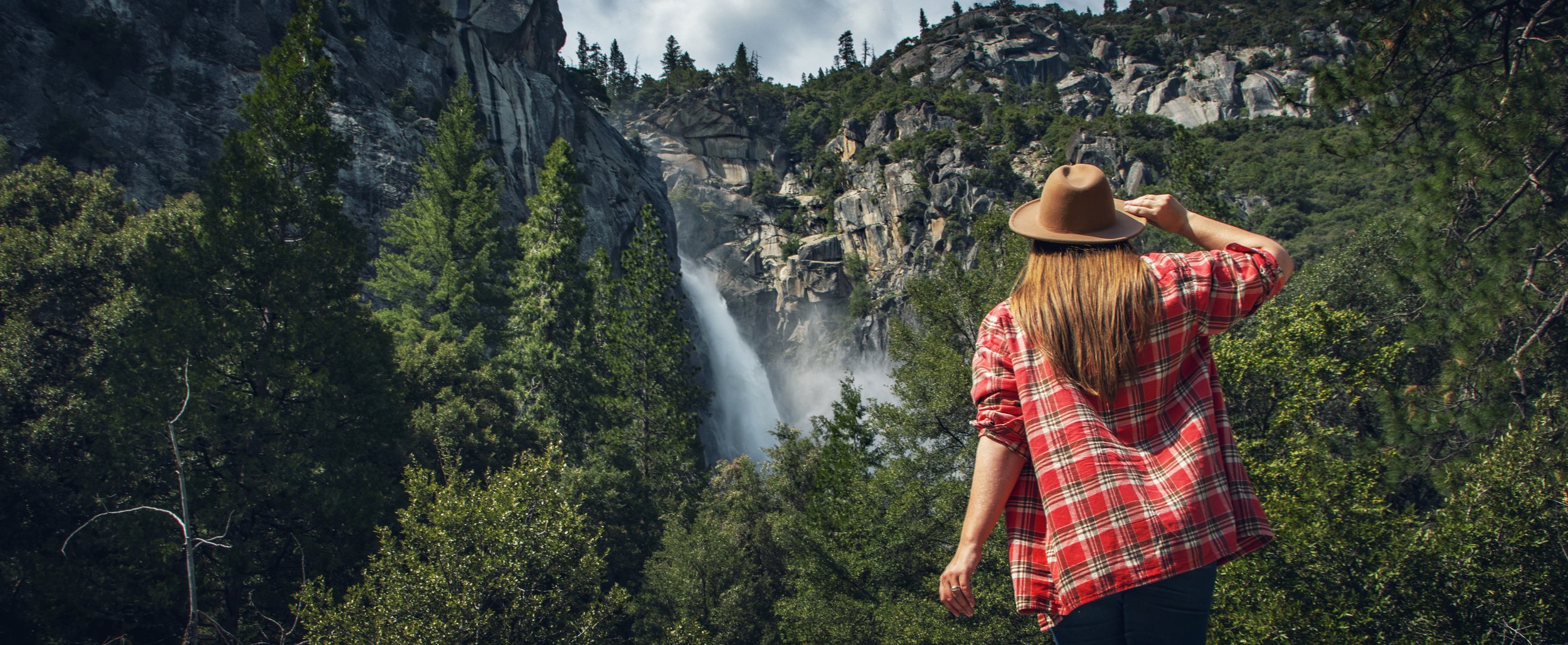






















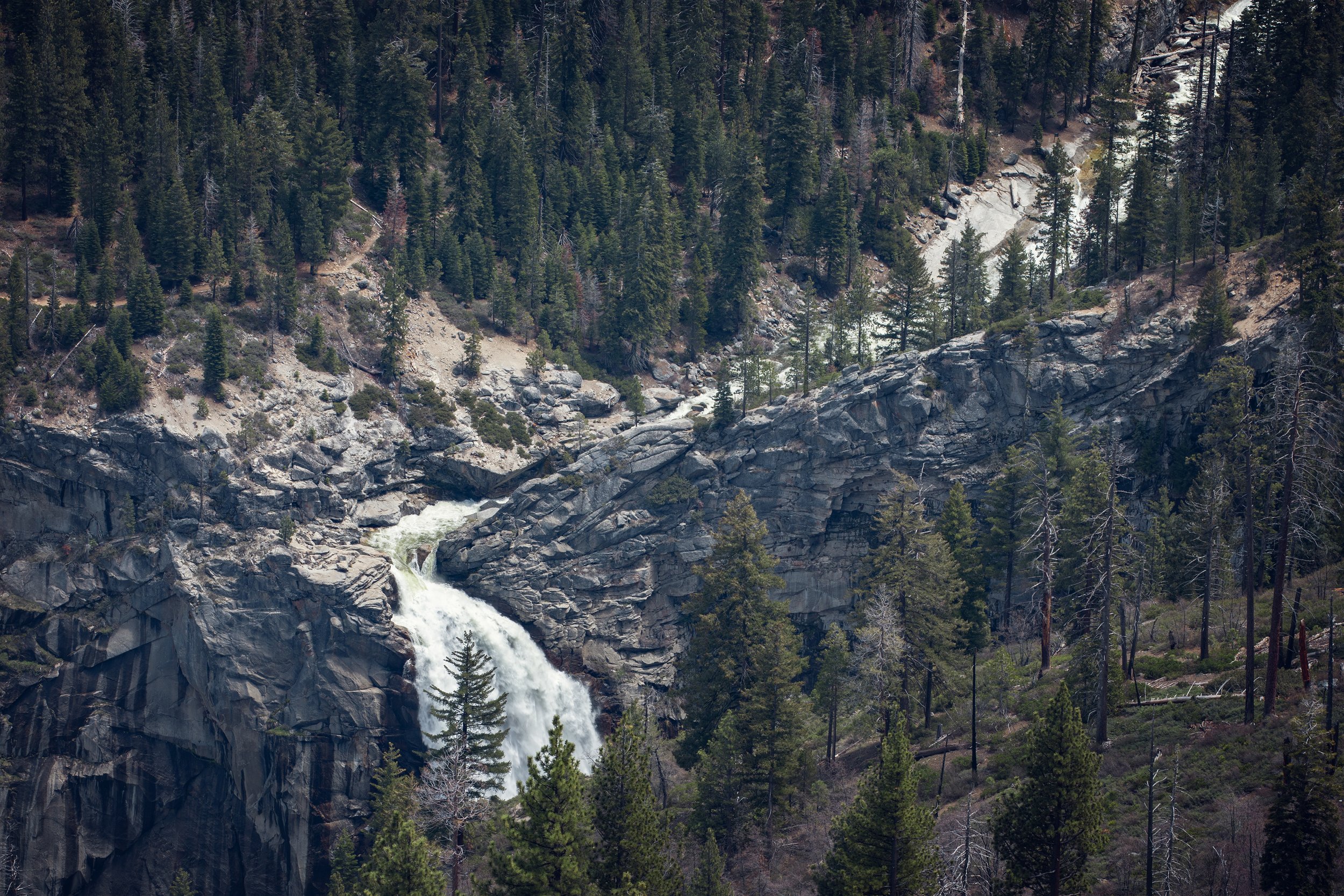






















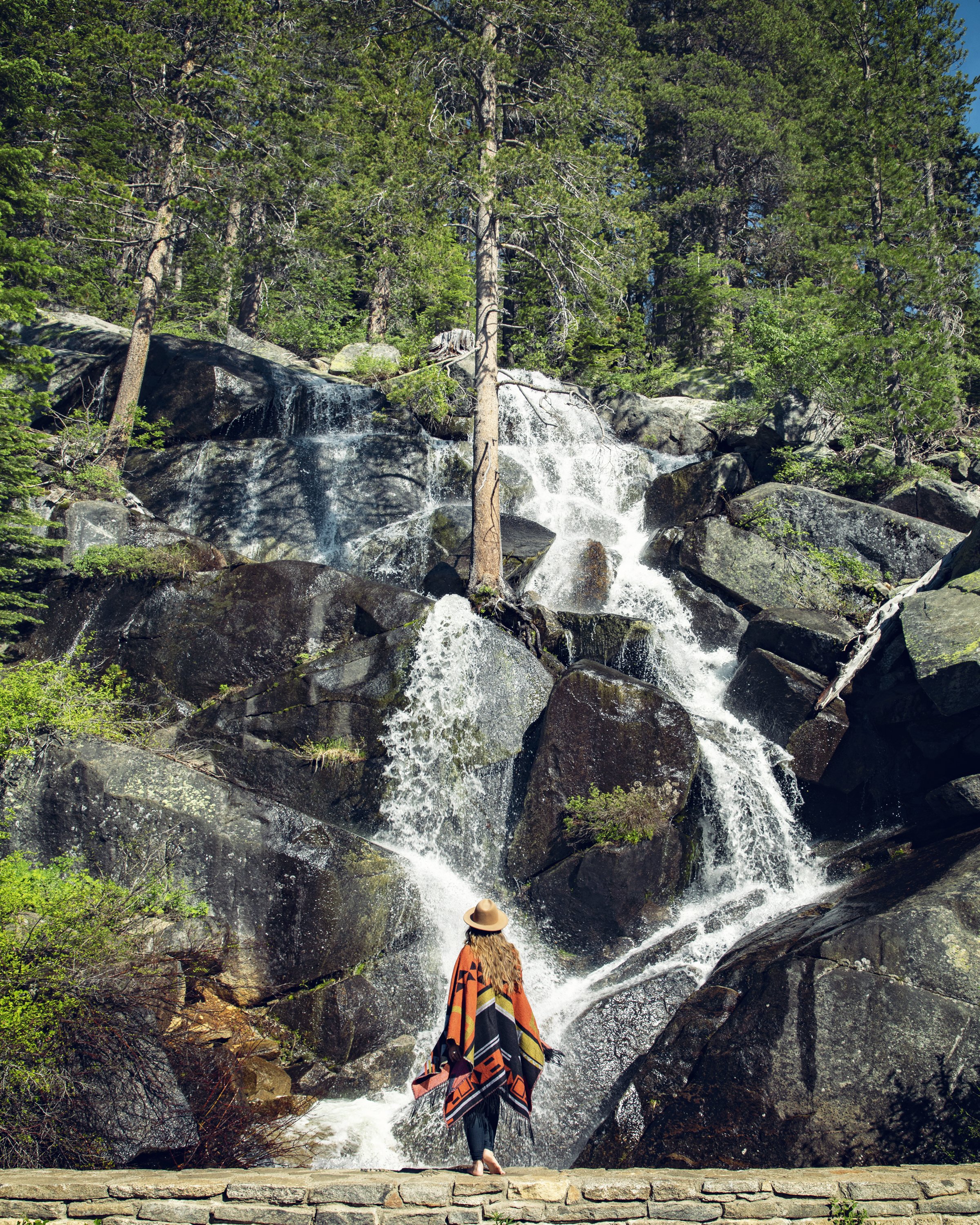


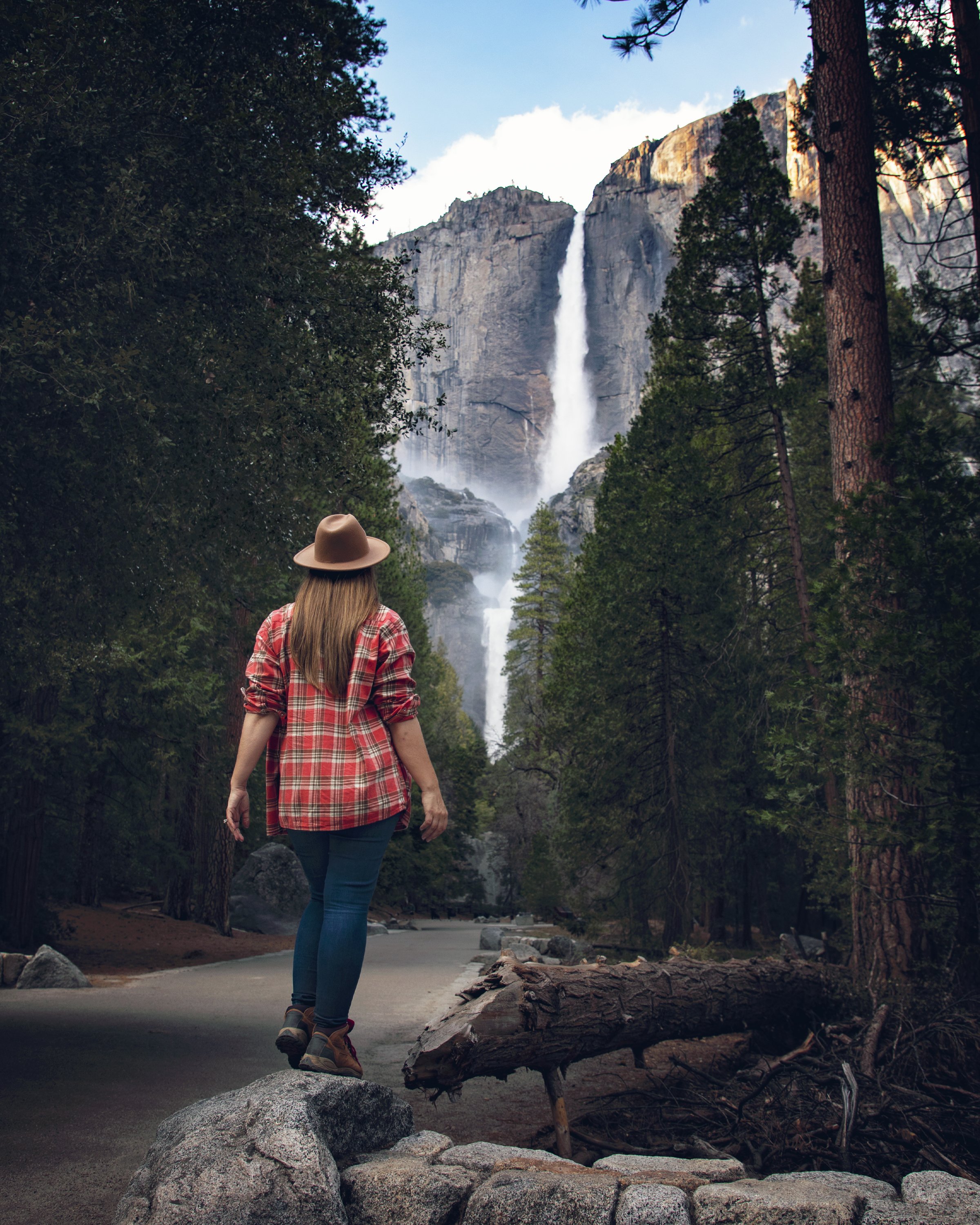





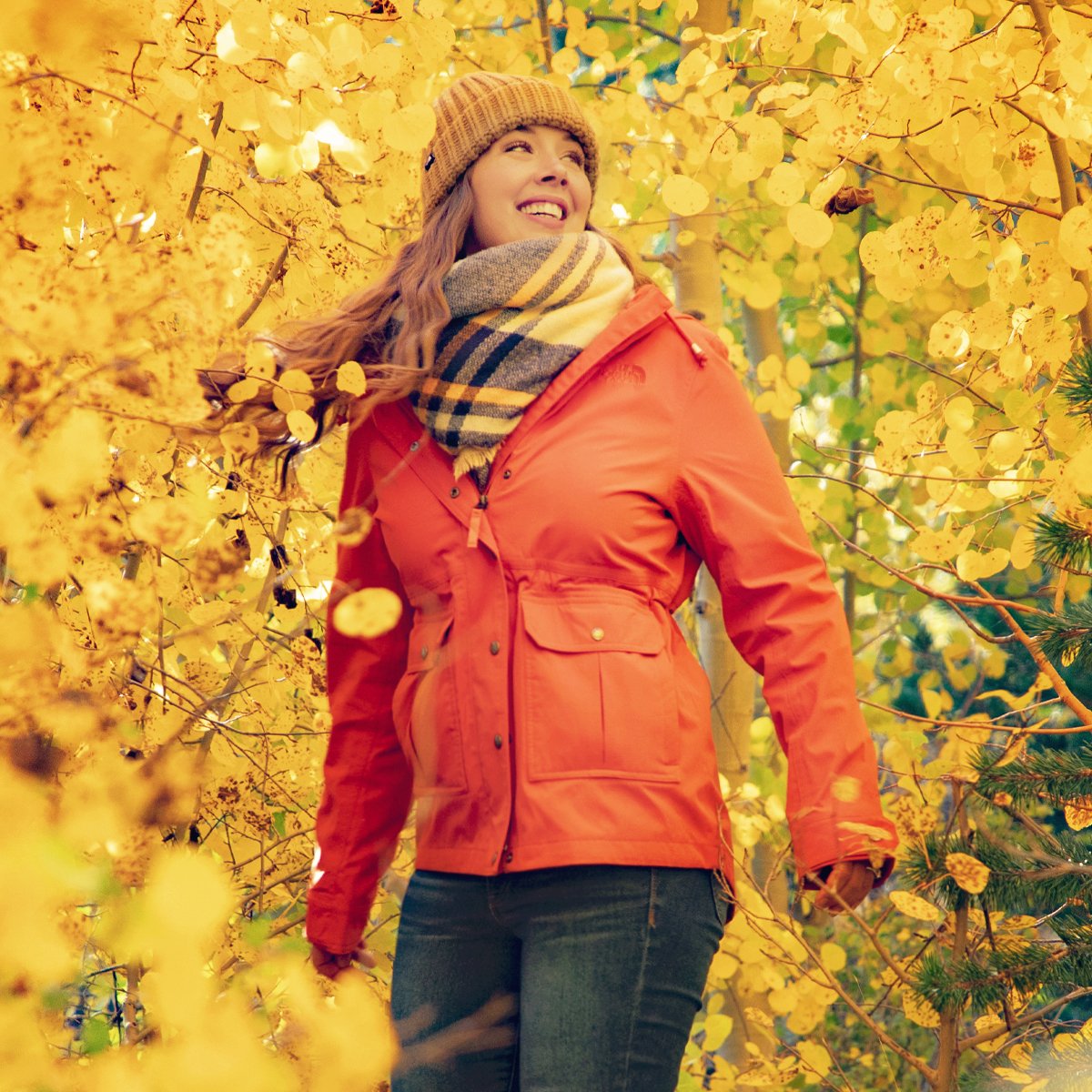
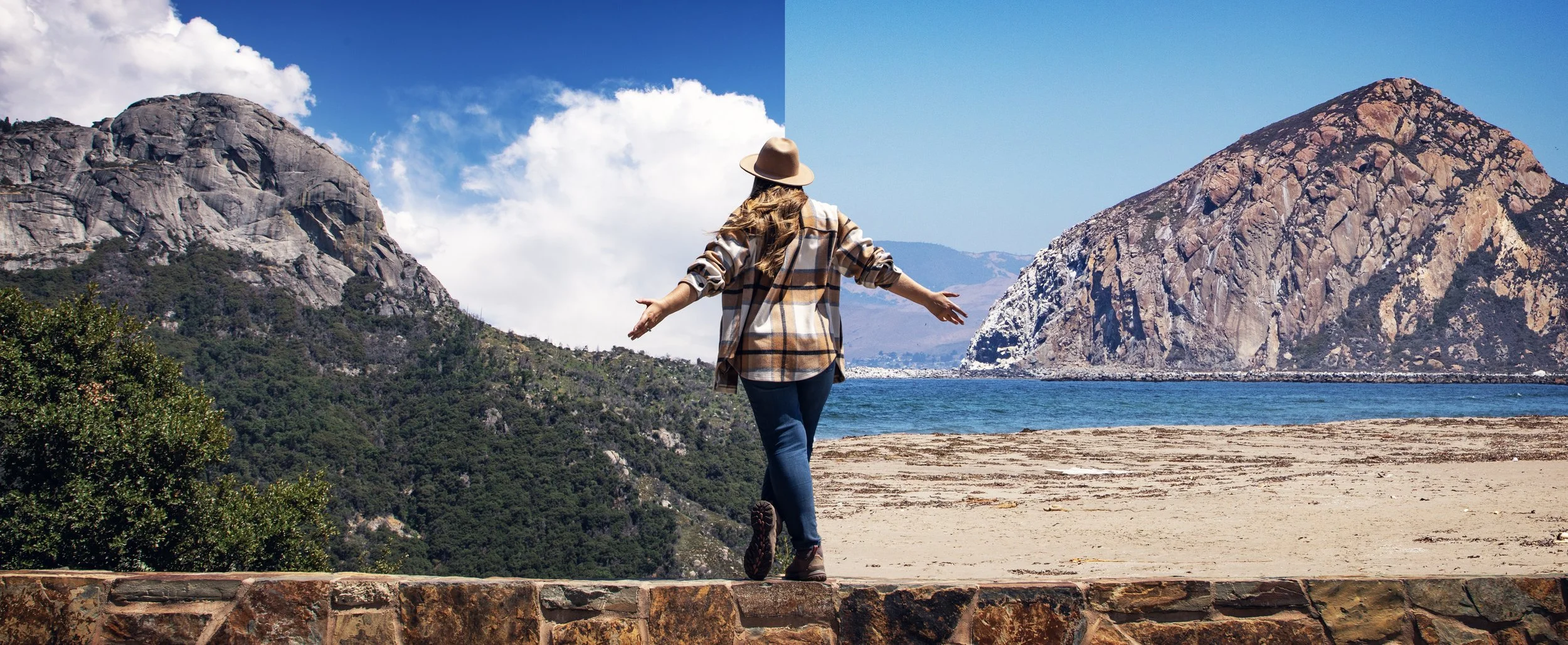
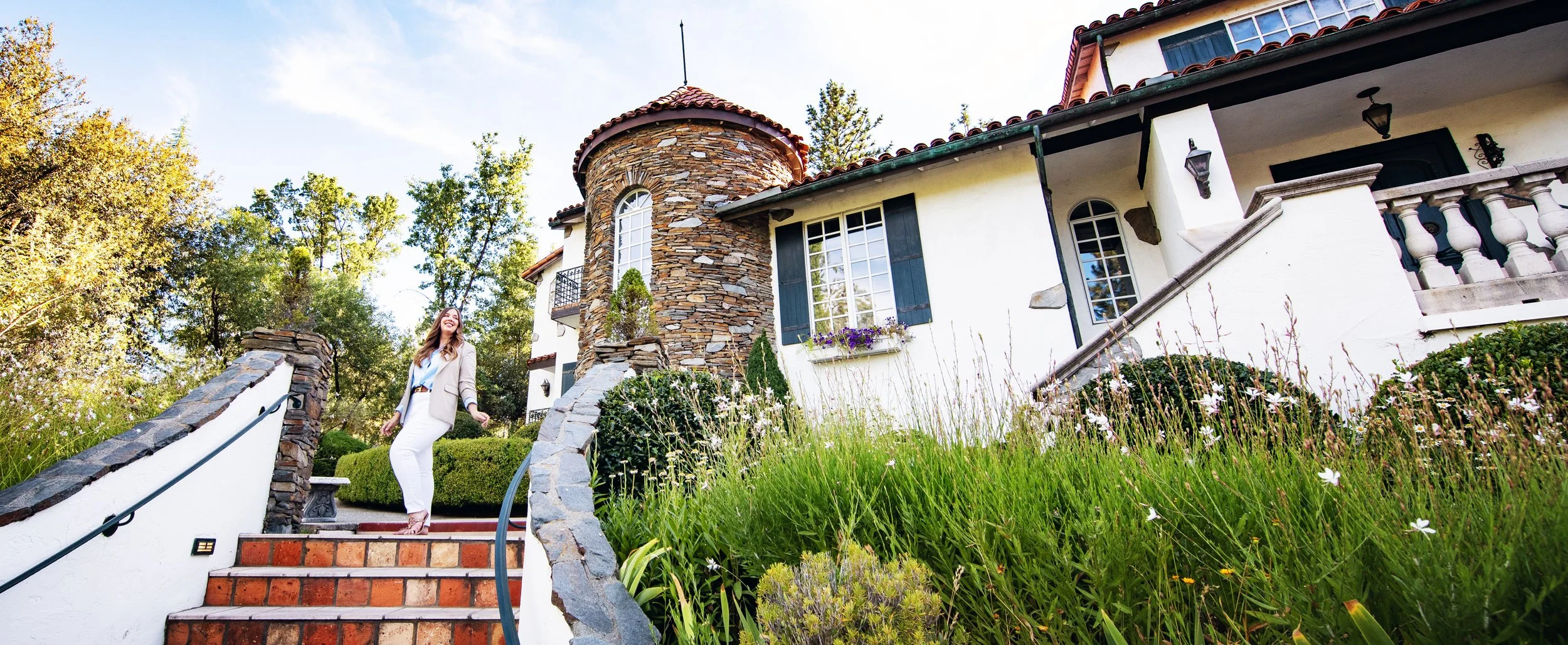



Discover Château du Sureau, a luxury European-style boutique hotel in Oakhurst, California, just minutes from Yosemite National Park. This romantic château offers elegant guest rooms, a private luxurious villa, fine dining at The Elderberry House, a cozy wine cellar bar, a full-service spa, manicured gardens, a Roman-style pool, and an unforgettable upscale stay near Yosemite’s South Gate.